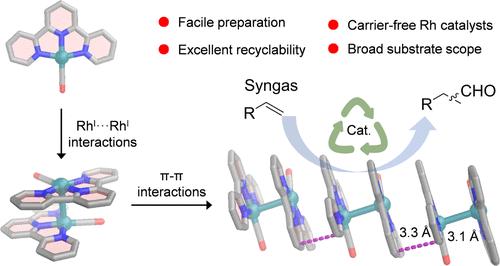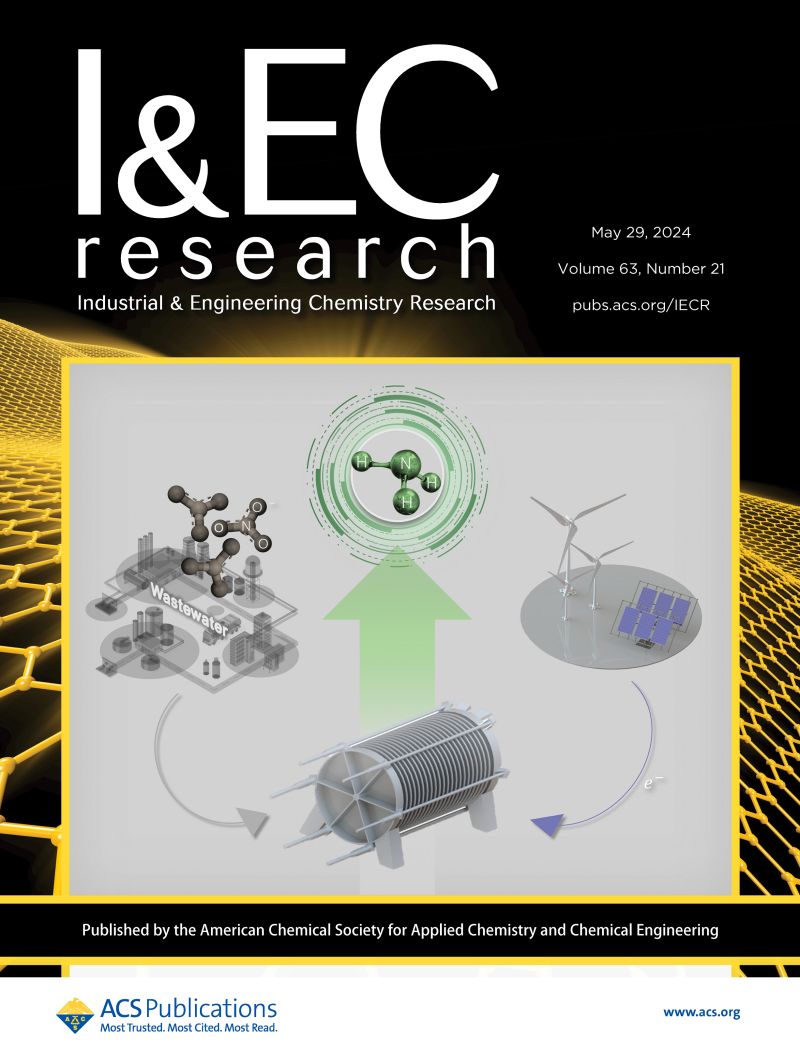一种无载体可回收的Rh/三吡啶催化剂用于烯烃氢甲酰化:均相催化和非均相分离
IF 3.9
3区 工程技术
Q2 ENGINEERING, CHEMICAL
引用次数: 0
摘要
烯烃氢甲酰化反应是生产高附加值醛的重要工业工艺之一。采用核磁共振(NMR)、电喷雾质谱(ESI-MS)、x射线单晶衍射(XRD)和扫描电子显微镜(SEM)等方法合成了一种新的方形平面铑(I)配合物RhI(CO)(terpyridine)。该配合物在室温下通过RhI··RhI和π -π相互作用以自我复制的方式结晶,使其能够在各种烯烃的氢甲酰化反应中作为无载体可回收的铑催化剂,有效地解决了催化剂与产物分离的挑战。独特的填充模型使RhI(CO)(三联吡啶)配合物在氢甲酰化条件下部分溶解,从而起到均相催化剂的作用。此外,在标准反应条件下(40 bar, 100°C, 4 h), RhI(CO)(terpyridine)在10次循环中保持了环己烯氢甲酰化反应的一致性和结构完整性。此外,RhI(CO)(terpyridine)结合了均相催化和非均相分离的优势,在长链C6-C18烯烃、α-甲基苯乙烯和混合辛烯的氢甲酰化反应中表现出高反应活性和强大的可回收性。突出其工业应用潜力。本文章由计算机程序翻译,如有差异,请以英文原文为准。

A Carrier-Free Recyclable Rh/Terpyridine Catalyst for Alkene Hydroformylation: Homogeneous Catalysis and Heterogeneous Separation
Hydroformylation of alkenes is one of the most important industrial processes for the production of value-added aldehydes. A new square-planar geometry rhodium(I) complex, RhI(CO)(terpyridine), has been synthesized and characterized using nuclear magnetic resonance (NMR), electrospray ionization mass spectrometry (ESI-MS), single-crystal X-ray diffraction (XRD), and scanning electron microscopy (SEM). This complex crystallizes in a self-replicating manner through RhI···RhI and π–π interactions at room temperature, allowing it to function as a carrier-free recyclable rhodium catalyst in the hydroformylation of various alkenes, which effectively addresses the challenge associated with the separation of catalysts from products. The unique packing model enables the RhI(CO)(terpyridine) complex to partially dissolve under hydroformylation conditions, thereby acting as a homogeneous catalyst. Furthermore, it maintains both consistent reactivity and structural integrity for cyclohexene hydroformylation reactions over 10 recycling runs under standard reaction conditions (40 bar, 100 °C, and 4 h). Additionally, RhI(CO)(terpyridine) integrated the advantages of homogeneous catalysis and heterogeneous separation, as demonstrated by its high reactivity and robust recyclability in the hydroformylation of long-chain C6–C18 alkenes, α-methylstyrene, and mixed octenes, highlighting its potential for industrial applications.
求助全文
通过发布文献求助,成功后即可免费获取论文全文。
去求助
来源期刊

Industrial & Engineering Chemistry Research
工程技术-工程:化工
CiteScore
7.40
自引率
7.10%
发文量
1467
审稿时长
2.8 months
期刊介绍:
ndustrial & Engineering Chemistry, with variations in title and format, has been published since 1909 by the American Chemical Society. Industrial & Engineering Chemistry Research is a weekly publication that reports industrial and academic research in the broad fields of applied chemistry and chemical engineering with special focus on fundamentals, processes, and products.
 求助内容:
求助内容: 应助结果提醒方式:
应助结果提醒方式:


